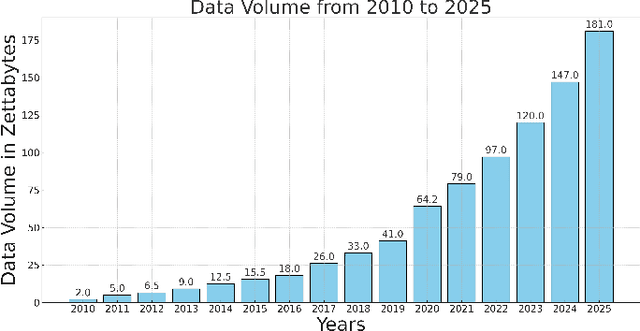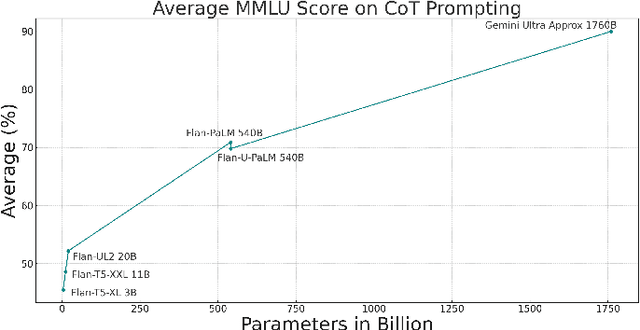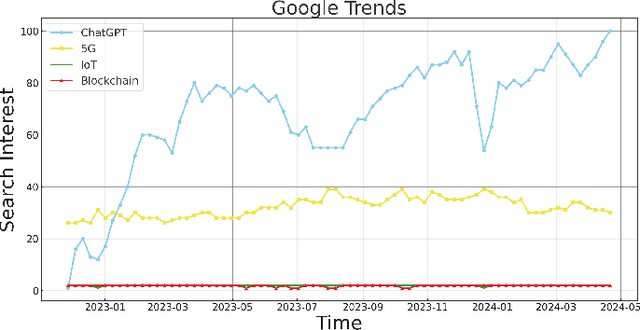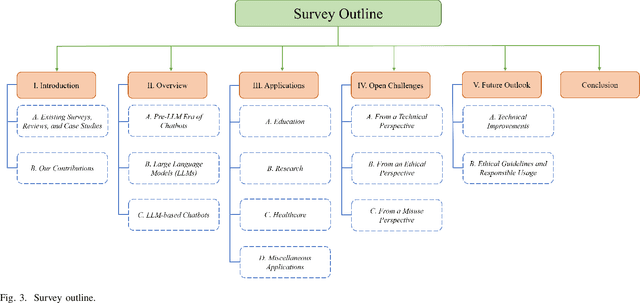Sumit Kumar Dam
A Complete Survey on LLM-based AI Chatbots
Jun 17, 2024



Abstract:The past few decades have witnessed an upsurge in data, forming the foundation for data-hungry, learning-based AI technology. Conversational agents, often referred to as AI chatbots, rely heavily on such data to train large language models (LLMs) and generate new content (knowledge) in response to user prompts. With the advent of OpenAI's ChatGPT, LLM-based chatbots have set new standards in the AI community. This paper presents a complete survey of the evolution and deployment of LLM-based chatbots in various sectors. We first summarize the development of foundational chatbots, followed by the evolution of LLMs, and then provide an overview of LLM-based chatbots currently in use and those in the development phase. Recognizing AI chatbots as tools for generating new knowledge, we explore their diverse applications across various industries. We then discuss the open challenges, considering how the data used to train the LLMs and the misuse of the generated knowledge can cause several issues. Finally, we explore the future outlook to augment their efficiency and reliability in numerous applications. By addressing key milestones and the present-day context of LLM-based chatbots, our survey invites readers to delve deeper into this realm, reflecting on how their next generation will reshape conversational AI.
One Small Step for Generative AI, One Giant Leap for AGI: A Complete Survey on ChatGPT in AIGC Era
Apr 04, 2023Abstract:OpenAI has recently released GPT-4 (a.k.a. ChatGPT plus), which is demonstrated to be one small step for generative AI (GAI), but one giant leap for artificial general intelligence (AGI). Since its official release in November 2022, ChatGPT has quickly attracted numerous users with extensive media coverage. Such unprecedented attention has also motivated numerous researchers to investigate ChatGPT from various aspects. According to Google scholar, there are more than 500 articles with ChatGPT in their titles or mentioning it in their abstracts. Considering this, a review is urgently needed, and our work fills this gap. Overall, this work is the first to survey ChatGPT with a comprehensive review of its underlying technology, applications, and challenges. Moreover, we present an outlook on how ChatGPT might evolve to realize general-purpose AIGC (a.k.a. AI-generated content), which will be a significant milestone for the development of AGI.
A Complete Survey on Generative AI : Is ChatGPT from GPT-4 to GPT-5 All You Need?
Mar 21, 2023



Abstract:As ChatGPT goes viral, generative AI (AIGC, a.k.a AI-generated content) has made headlines everywhere because of its ability to analyze and create text, images, and beyond. With such overwhelming media coverage, it is almost impossible for us to miss the opportunity to glimpse AIGC from a certain angle. In the era of AI transitioning from pure analysis to creation, it is worth noting that ChatGPT, with its most recent language model GPT-4, is just a tool out of numerous AIGC tasks. Impressed by the capability of the ChatGPT, many people are wondering about its limits: can GPT-5 (or other future GPT variants) help ChatGPT unify all AIGC tasks for diversified content creation? Toward answering this question, a comprehensive review of existing AIGC tasks is needed. As such, our work comes to fill this gap promptly by offering a first look at AIGC, ranging from its techniques to applications. Modern generative AI relies on various technical foundations, ranging from model architecture and self-supervised pretraining to generative modeling methods (like GAN and diffusion models). After introducing the fundamental techniques, this work focuses on the technological development of various AIGC tasks based on their output type, including text, images, videos, 3D content, etc., which depicts the full potential of ChatGPT's future. Moreover, we summarize their significant applications in some mainstream industries, such as education and creativity content. Finally, we discuss the challenges currently faced and present an outlook on how generative AI might evolve in the near future.
 Add to Chrome
Add to Chrome Add to Firefox
Add to Firefox Add to Edge
Add to Edge